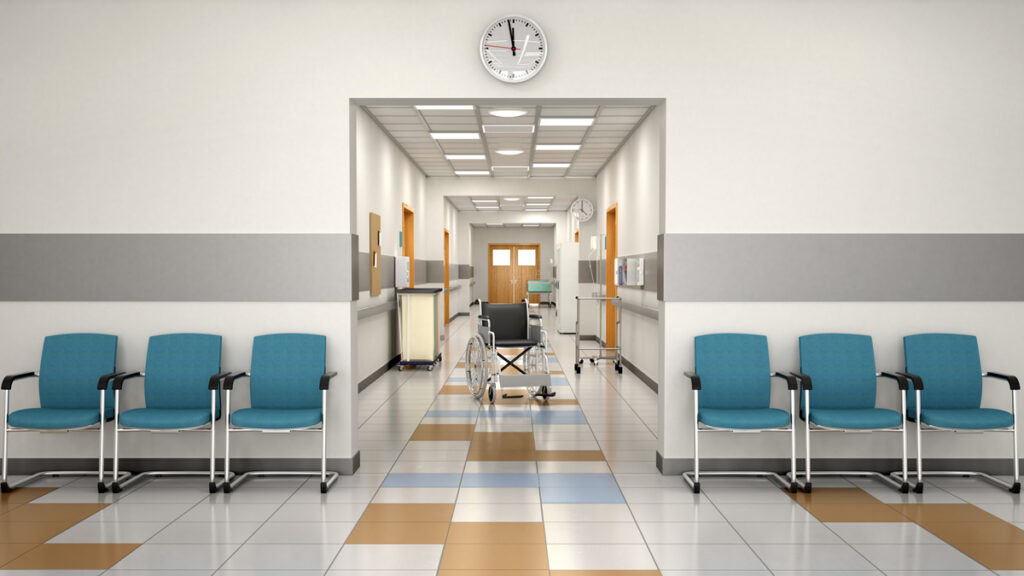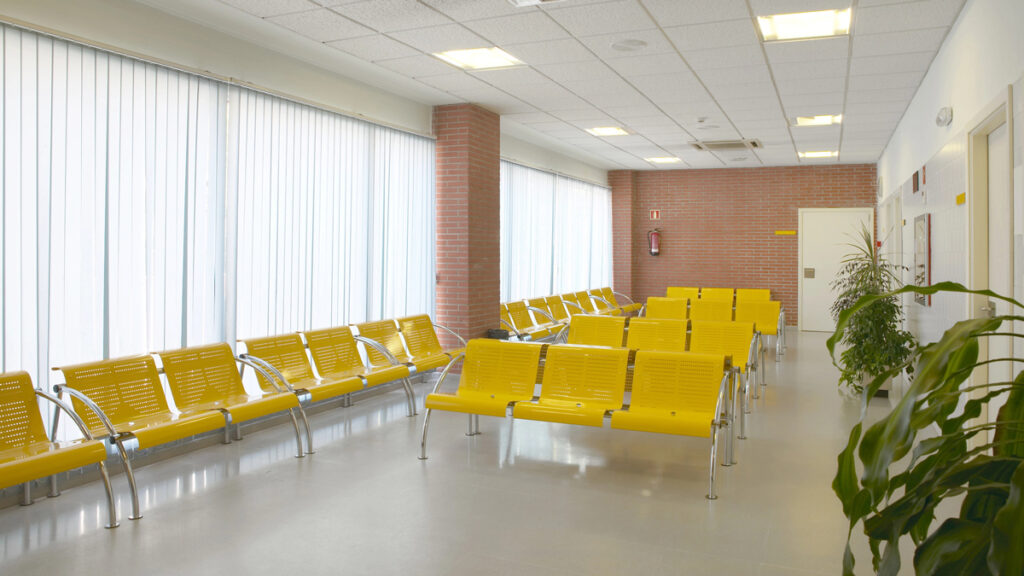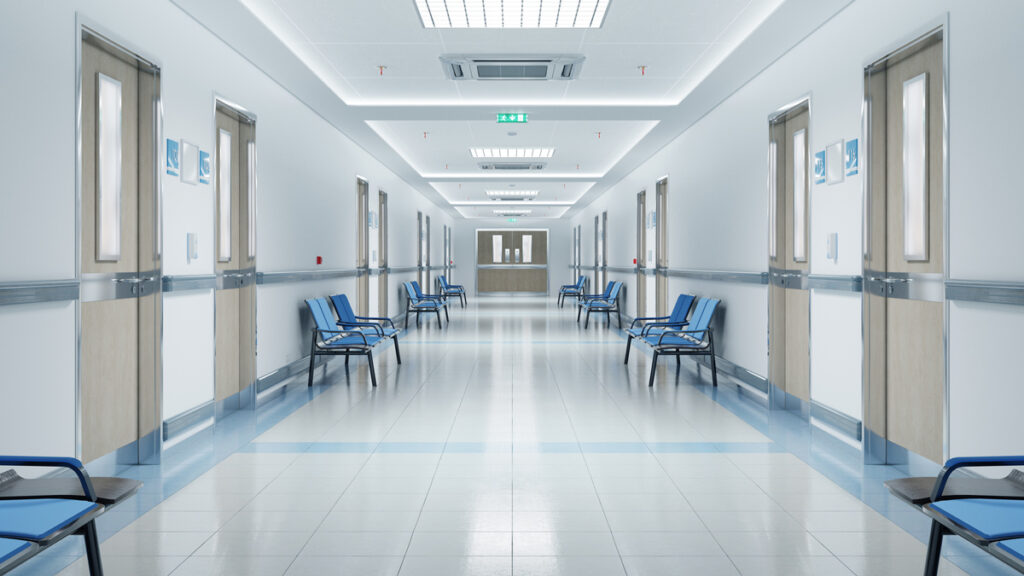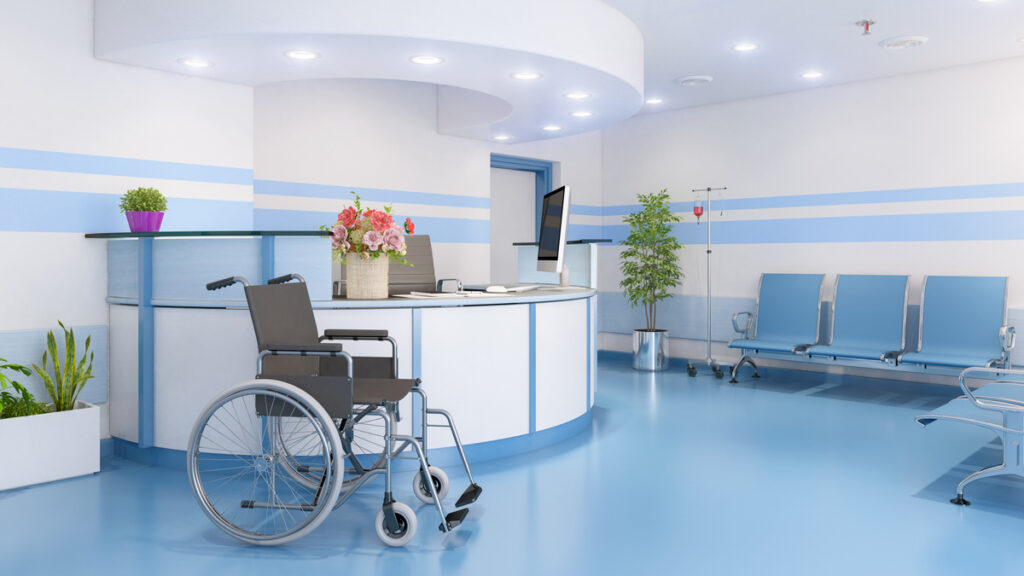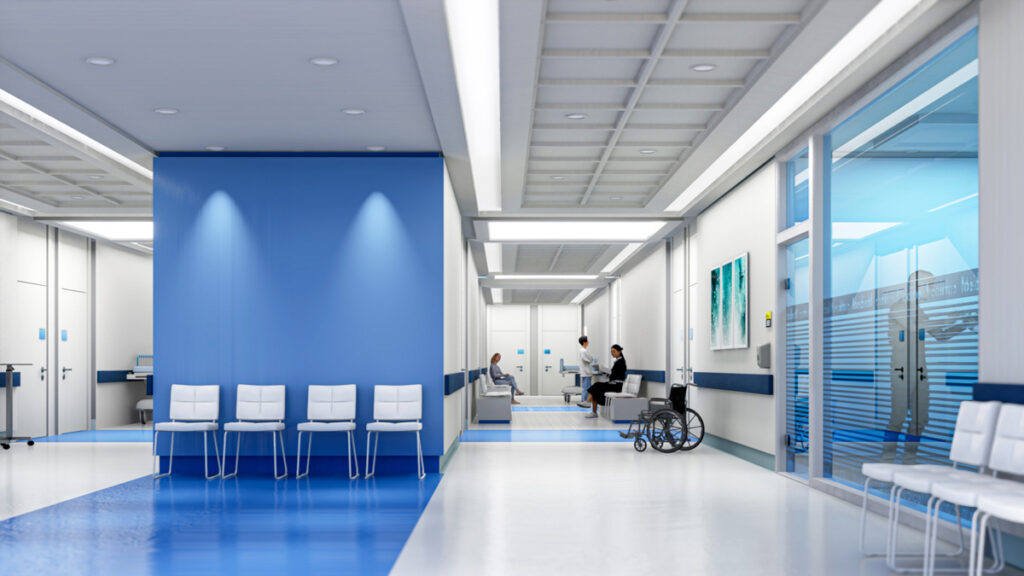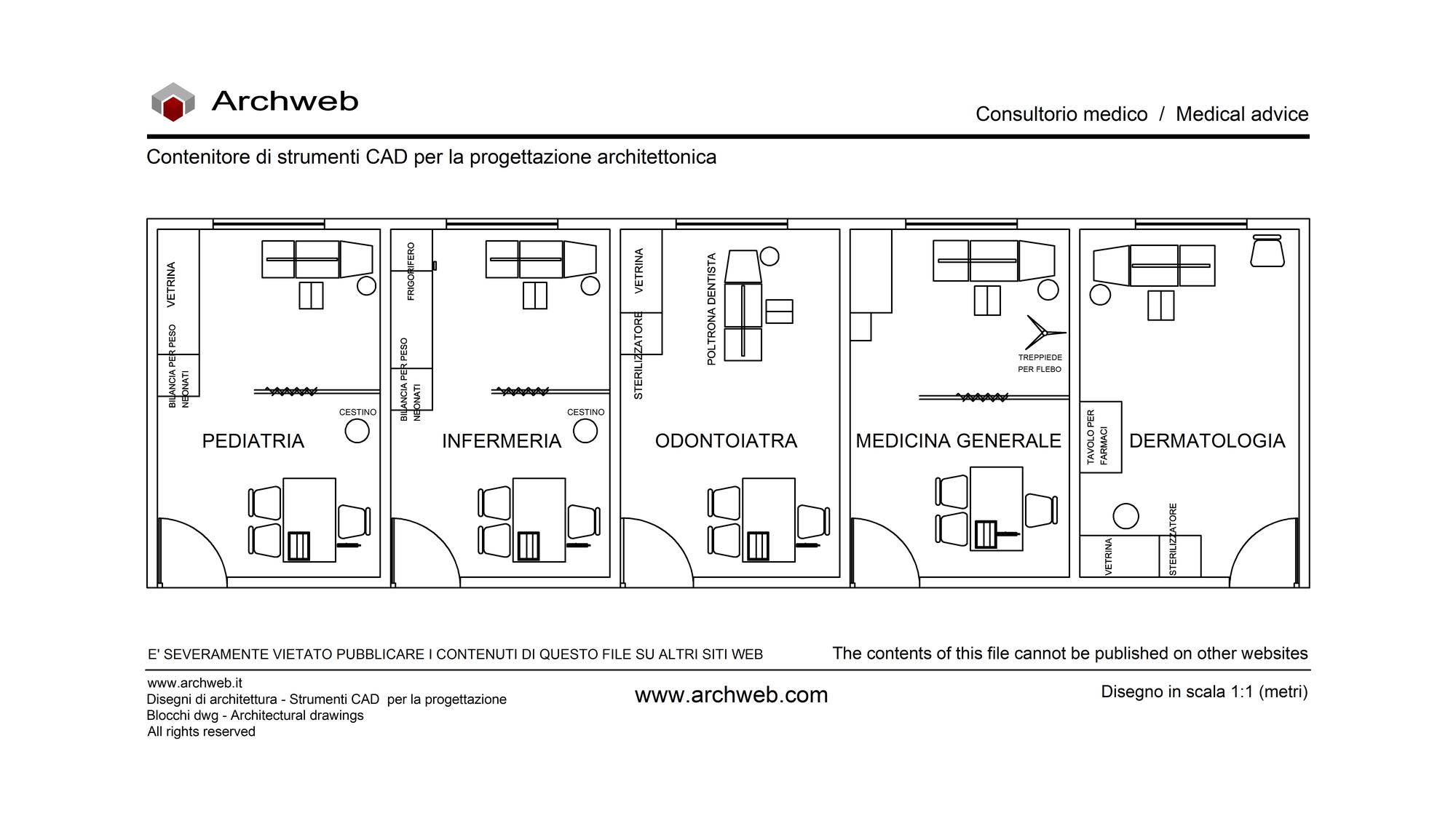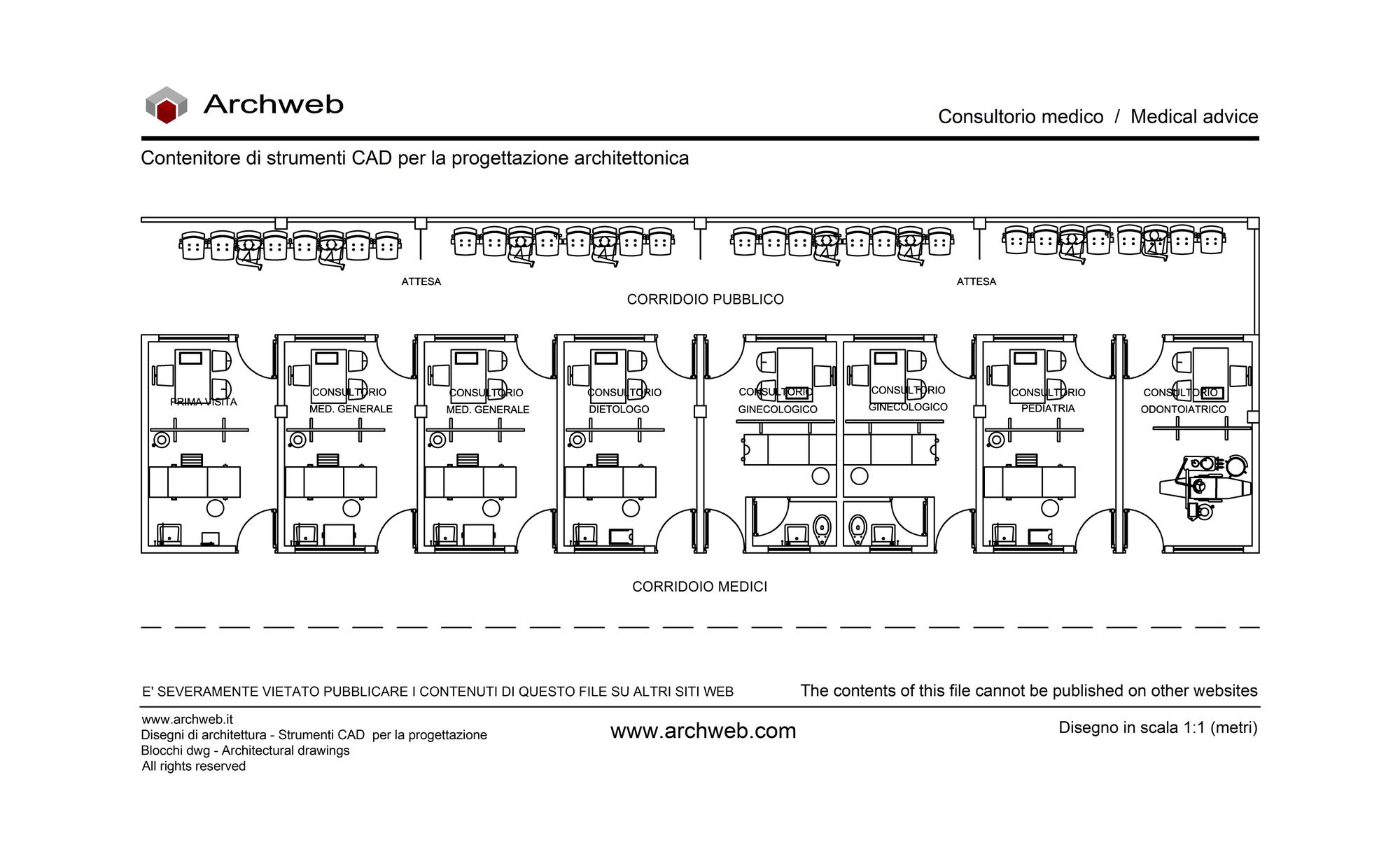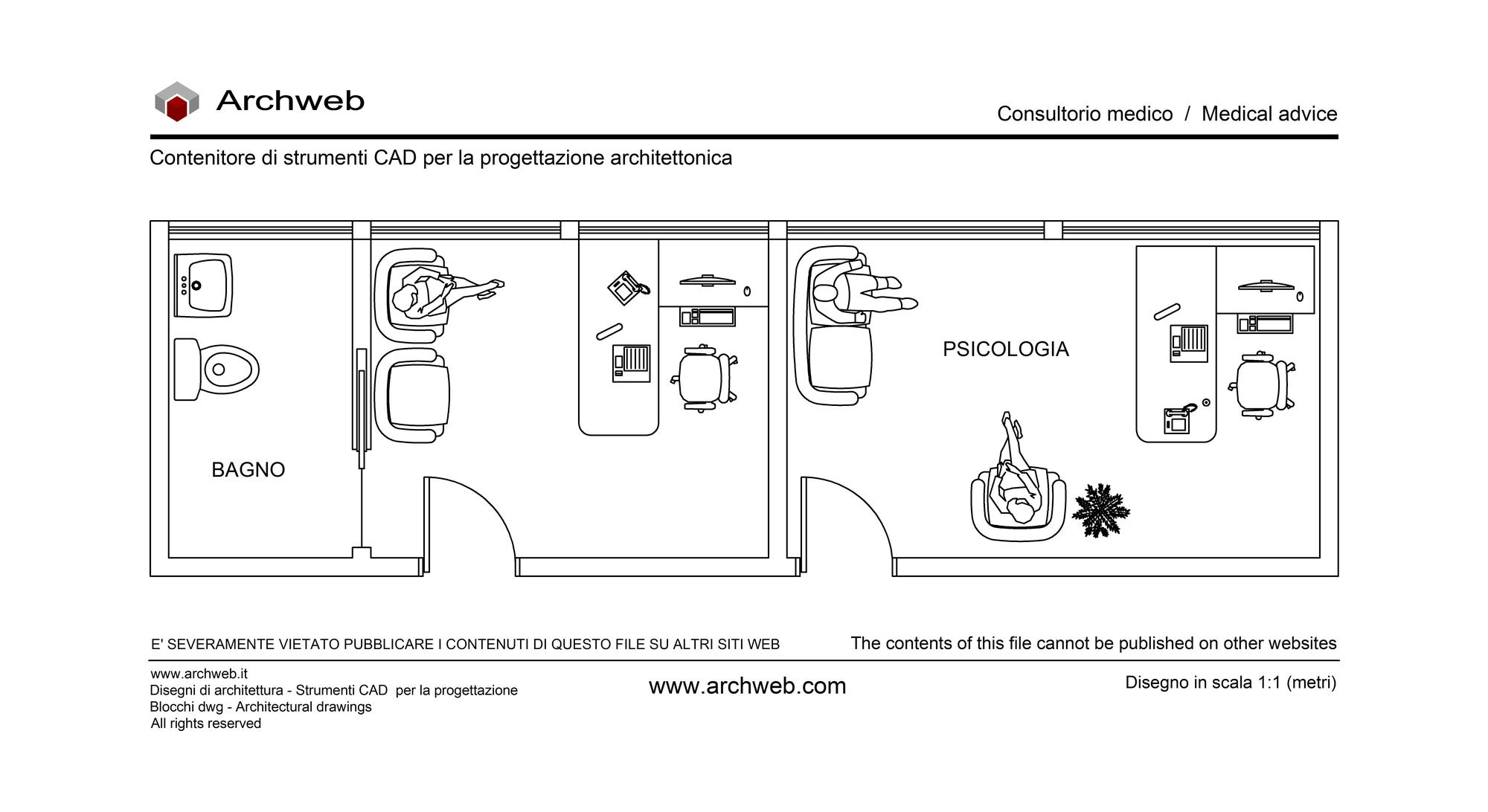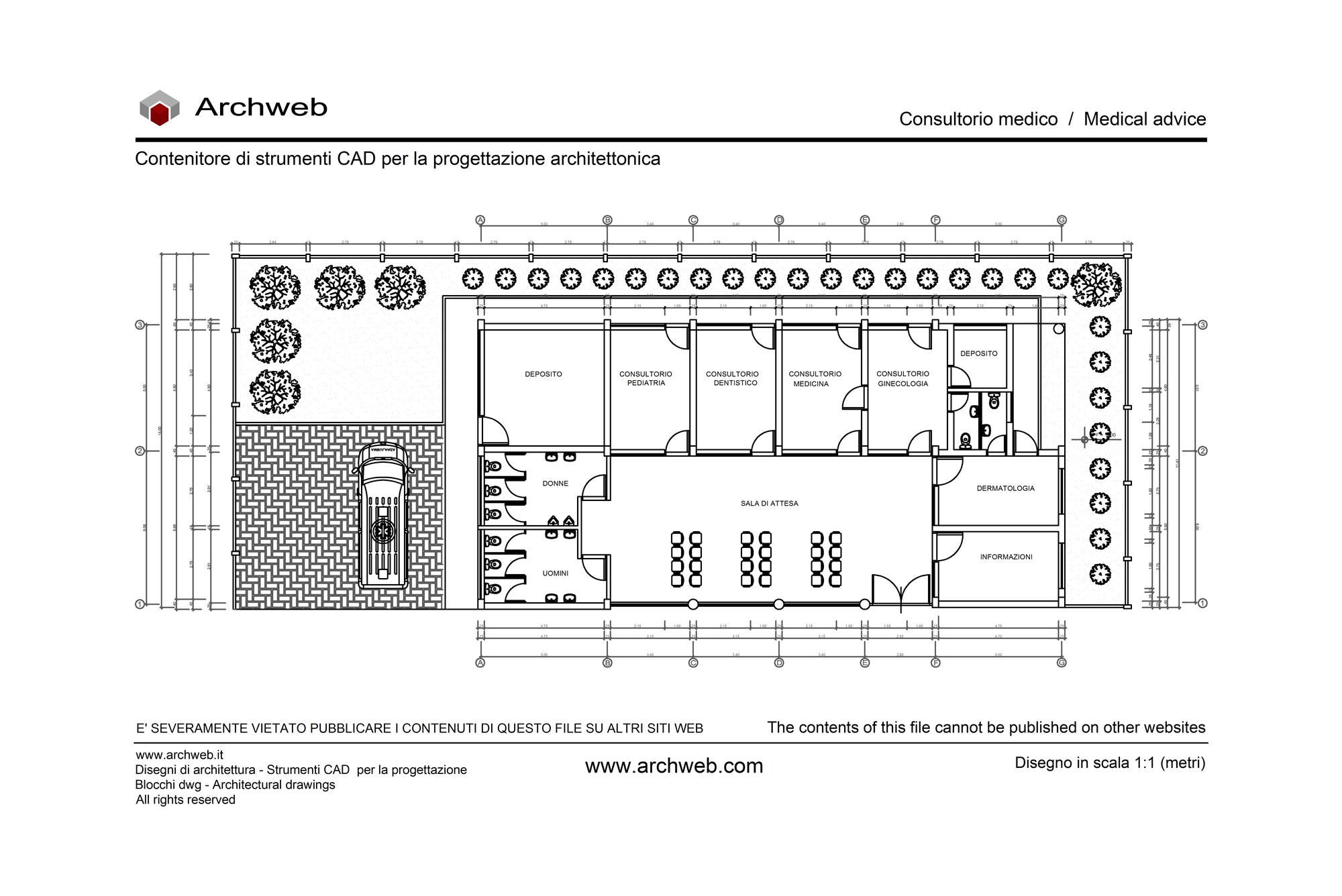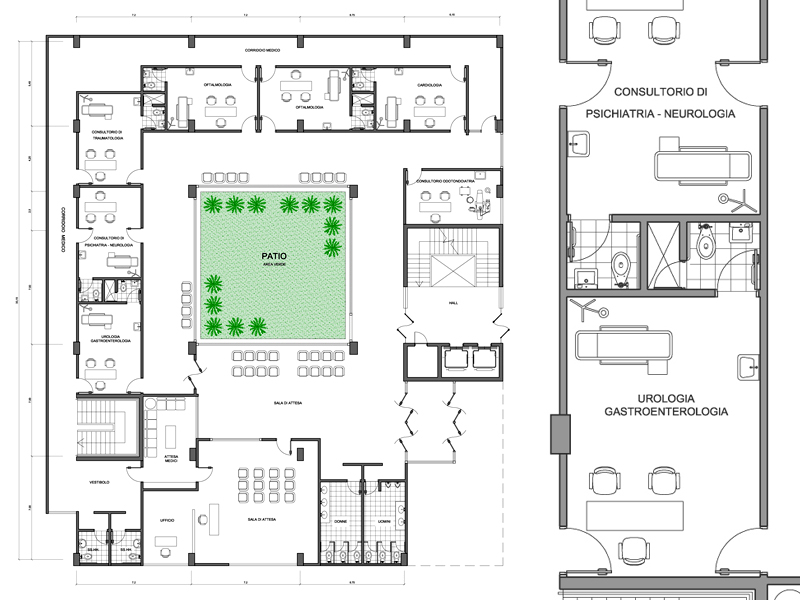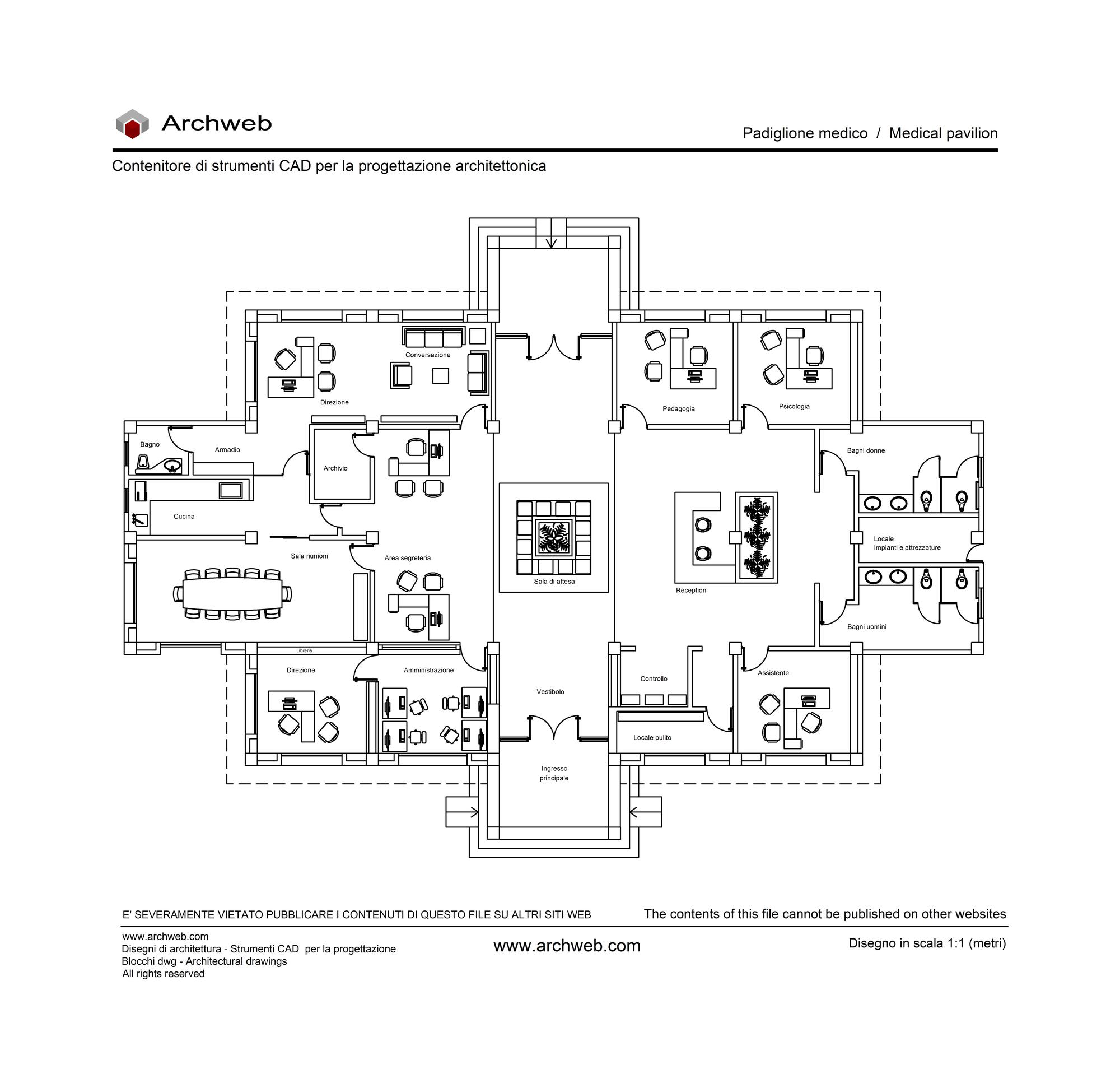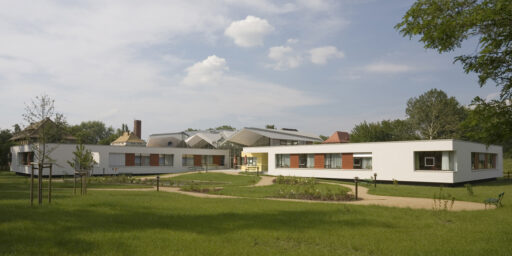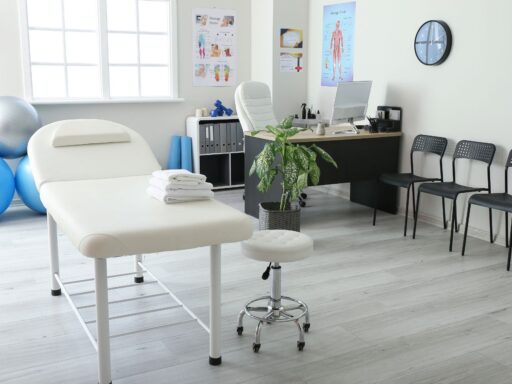Polyclinic
Design Guidelines

The design of an outpatient clinic is a complex process that requires careful planning and a thorough understanding of the needs of patients and healthcare professionals. A well-designed outpatient clinic can offer numerous benefits, including increased efficiency, improved quality of care and a more satisfactory overall experience for patients.
In this guide, we will explore the main characteristics of an outpatient clinic, the benefits it can offer, and the essential guidelines for its design. You will discover how to create a functional, efficient and welcoming space that meets the needs of all users.
Definition and main characteristics of an Outpatient Clinic
An outpatient clinic is a healthcare facility that offers a wide range of medical and specialist services in one place. Unlike a single outpatient clinic, an outpatient clinic brings together different specialities and healthcare professionals, allowing patients to access multiple services in a more convenient and integrated manner.
The main features of an outpatient clinic include:
- Diversity of services. A wide range of services is available, such as specialist visits, diagnostic examinations, physical and rehabilitation therapies, laboratory services and much more.
- Integration of care. The different health professionals within the outpatient clinic work together to provide an integrated approach to patient care, improving continuity and quality of services.
- Accessibility and convenience. The presence of multiple services in one place facilitates patient access, reducing travel and waiting times.
- Operational efficiency. The concentration of resources and expertise in a single space can improve the efficiency and productivity of healthcare personnel.
- Advanced technology. Outpatient clinics are often equipped with state-of-the-art equipment and technology to support high-quality diagnosis and treatment.
Advantages of the polyclinic for patients and health professionals
The outpatient clinic offers numerous advantages for both patients and healthcare professionals:
Benefits for patients:
- Facilitated access. Patients can access a wide range of services in one place, saving time and effort.
- Continuity of care. Coordination between health professionals within the outpatient clinic improves continuity and quality of care.
- Increased satisfaction. Patients experience a smoother and more satisfying experience due to the integration of services.
Benefits for health workers:
- Interprofessional collaboration. The outpatient clinic promotes collaboration and knowledge exchange between health professionals.
- Operational efficiency. The concentration of resources and expertise in a single space increases efficiency and productivity.
- Access to advanced technology. Healthcare professionals can make use of state-of-the-art equipment and technology to provide high quality services.

Guidelines for designing an efficient outpatient clinic
The design of an outpatient clinic requires the careful consideration of several factors. Here are some key guidelines:
- Needs analysis. Conduct a thorough needs analysis of patients and caregivers to understand their expectations and priorities.
- Patient flow. Design a smooth and intuitive patient flow, with clear pathways and effective signage.
- Space organisation. Divide spaces according to different functions (waiting areas, clinics, laboratories, etc.) to optimise space utilisation.
- Accessibility and comfort. Ensuring accessibility for people with disabilities and creating welcoming and comfortable environments for patients.
- Technology integration. Integrate advanced technological solutions, such as online booking systems, electronic medical records and telemedicine tools.
- Energy efficiency. Adopt environmentally sustainable design solutions to reduce energy consumption and environmental impact.
- Flexibility and adaptability. Design a flexible and adaptable space to allow for future expansion or modification.
- Safety and regulatory compliance. Ensure compliance with all safety and hygiene regulations to protect the health of patients and operators.
Facilities and equipment needed in an outpatient clinic
A well-designed outpatient clinic must include a number of facilities and equipment to offer a wide range of health services. Some of the main facilities and equipment needed are:
- Specialist outpatient clinics. Spaces dedicated to examinations and treatment of different medical specialities.
- Diagnostic areas. Laboratories, rooms for radiological examinations, ultrasound scans and other diagnostic investigations.
- Rehabilitation spaces. Areas for physiotherapy, occupational therapy and rehabilitation.
- Short-term in-patient areas. Rooms for patient observation and monitoring.
- Support services. Pharmacy, withdrawal services, administrative desk, etc.
- Advanced technologies. State-of-the-art medical equipment for diagnosis and treatment.
- Computer systems. Digital solutions for health information and workflow management.
The combination and arrangement of these facilities and equipment within the outpatient clinic must be carefully planned to ensure an efficient workflow and a positive patient experience.
Organisation of spaces
The organisation of space within an outpatient clinic plays a key role in ensuring a smooth and pleasant experience for patients. Here are some key principles to consider:
- Reception and waiting areas. Create welcoming and comfortable spaces for receiving and waiting patients, with adequate seating, appropriate lighting and entertainment.
- Outpatient clinics and diagnostic areas. Position outpatient clinics and diagnostic areas strategically to facilitate patient flow and reduce waiting times.
- Support areas. Conveniently locate support services, such as pharmacy, blood collection and administrative activities, to simplify procedures for patients.
- Spaces for staff. Reserve dedicated areas for healthcare staff, such as offices, meeting rooms and break areas, to ensure their well-being and productivity.
- Circulation and signage. Design clear and intuitive circulation routes, supported by effective signage, to guide patients through the outpatient clinic.
- Accessibility and inclusiveness. Ensure accessibility for people with disabilities and create inclusive environments that take into account the different needs of patients.
- Flexibility and adaptability. Design flexible and adaptable spaces to allow for future expansion or modification without compromising the efficiency of the outpatient clinic.
Proper organisation of spaces contributes to an improved patient experience, operational efficiency and satisfaction of healthcare personnel.
Render slides with examples of waiting rooms for outpatient clinics. Source: Depositphotos.com
Patient flow management
Effective management of patient flow is key to ensuring a positive experience and reducing waiting times. Here are some strategies to adopt:
- Booking and check-in. Implement online booking and self-check-in systems to streamline access procedures.
- Signage and information. Use clear and intuitive signage to guide patients through the outpatient clinic and provide accurate information on available services.
- Waiting management. Adopt queue management techniques, such as call systems and information displays, to reduce patients’ perceived waiting times.
- Coordination between services. Ensure effective coordination between different health services within the outpatient clinic to avoid delays and interruptions in patient flow.
- Data monitoring and analysis. Collect and analyse data on patient flow to identify areas for improvement and optimise processes.
- Communication with patients. Maintain constant and transparent communication with patients, informing them about expected waiting times and any changes.
- Staff training. Properly train medical and administrative staff to manage patient flow efficiently.
Careful and strategic management of the flow of the public helps to improve patient satisfaction and the overall efficiency of the outpatient clinic.
The future of the polyclinic: trends and developments
The outpatient clinic is evolving rapidly, following trends and developments in the healthcare sector. Here are some of the main trends that will characterise the future of outpatient clinics:
- Integration of telemedicine. The expansion of telemedicine and teleconsultation services will become increasingly central to the outpatient offer, providing greater accessibility and convenience for patients.
- Greater customisation. Outpatient clinics will adopt a more personalised approach, tailoring services and experience to the specific needs of each patient.
- Advanced technologies. The integration of cutting-edge technologies, such as artificial intelligence, augmented reality and the Internet of Things (IoT), will improve diagnostic accuracy, operational efficiency and the patient experience.
- Holistic approach to health. The outpatient clinics of the future will adopt a more holistic approach to health, offering prevention, wellness and chronic disease management services.
- Sustainability and green. The design of outpatient clinics will increasingly focus on environmental sustainability, with eco-friendly and energy-efficient solutions.
- Interprofessional collaboration. Collaboration between healthcare professionals within outpatient clinics will become even more crucial to provide integrated, high quality care.
- Patient involvement. The outpatient clinics of the future will favour a more active involvement of patients in the management of their own health, through self-monitoring tools and shared decision-making.
These future developments will enable outpatient clinics to become even more efficient, innovative and patient-centred health centres.
Conclusion: the importance of the polyclinic for the healthcare system
The outpatient clinic plays a key role in the healthcare system, offering a high-quality, integrated care model. By concentrating different specialities and expertise in one place, outpatient clinics are able to provide patients with a smoother, more efficient and satisfying experience.
The careful and strategic design of an outpatient clinic is essential to maximise its benefits for both patients and healthcare professionals. By following the guidelines and trends presented in this guide, it is possible to create functional, welcoming and state-of-the-art spaces that meet the needs of all users.
Cover photo: Sturti di Getty Images Signature




























































